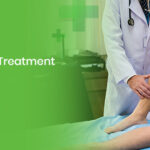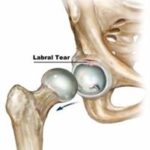Hip Osteoarthritis
Osteoarthritis is the most common form of hip arthritis. It is a chronic condition, characterized by the breakdown of the cartilage that cushions the ends of the bones (cartilage that lines the acetabulum and/or femoral head) causing the bones to rub against each other. This results in pain, stiffness, and loss of movement. Pain is often felt in the groin area and front of the thigh. Stiffness sets in after every period of inactivity.
Common Causes of Hip Osteoarthritis
Factors that predispose to osteoarthritis of hip include –
- Age – older populations are more likely to develop the problem.
- Osteoporosis – weaken bones are more likely to undergo wear and tear.
- Previous injury to the hip joint – derailed joints develop osteoarthritis easily.
- Obesity – excessive weight predisposes the joint to wear and tear.
- Abnormally formed hip joint at birth, a condition known as developmental dysplasia of the hip.
Even if the above-mentioned risk factors are not present, one can develop osteoarthritis of the hip joint.
Symptoms of Hip Osteoarthritis
- The symptoms include –
- The pain usually develops slowly and worsens over time. Pain and stiffness are the first worst thing in the morning. It may appear after every period of inactivity. Pain is felt in the groin area or thigh that may radiate to the buttocks or till knee. Pain can flares up with vigorous activity.
- Crepitus (grinding noise) can be felt with the movement of the hip joint and at times “Locking” of the joint may occur due to loose fragments of cartilage within the joint.
- Reduced range of hip motion in long-standing cases of osteoarthritis may affect activities like walking.
Examination of the Hip Joint would reveal most of the following signs –
- Tenderness around the hip joint may be present.
- The range of hip motion (active/passive) may or may not be restricted.
- Crepitus with movement may or may not be present.
- Pain when pressure is applied to the hip joint.
- Gait (pattern of walking) may be affected.
- The structures surrounding the hip joint may be affected.
Investigation
X-rays – of an arthritic hip may show narrowing of the joint space, arthritic changes in the bone, and formation of bone spurs (osteophytes). The hip joint of both sides should be compared.
Occasionally, an MRI scan or a CT scan, or a bone scan may be needed to determine the condition of the bone and soft tissues around the hip.
Treatment of Hip Osteoarthritis
- Conservative Treatment
As with other arthritic conditions, initially, osteoarthritis of the hip is managed conservatively. The following treatment options can be undertaken to minimize the deteriorating effects of osteoarthritis.
- Lifestyle modifications:
Some modifications in day-to-day life can slow down the rate of progression of osteoarthritis.
- Minimizing activities that aggravate the condition, such as climbing stairs.
- Switching from high-impact activities (like jogging or tennis) to lower impact activities (like swimming or cycling) will put less stress on the hip joint.
- Losing weight can reduce stress on the hip joint, resulting in less pain and increase functionality.
- Physiotherapy:
Physiotherapists may use ice/hot fermentation combined with other therapeutic modalities to relieve pain. Physiotherapists may use specific exercises, manual techniques to help increase range of motion and flexibility, as well as strengthen the muscles around the hip and leg. The physiotherapist helps develop an individualized exercise program that meets the lifestyle of a patient.
- Assistive devices:
Using walking supports like a cane, crutches, or a walker can improve mobility and independence.
- Medications:
If the pain is not relieved with the above treatment and affects the daily routine of a patient, he/she may see an Orthopaedician for medication.
- Nonsteroidal anti-inflammatory drugs (NSAIDs) may relieve pain and reduce inflammation.
- Corticosteroids can be prescribed orally or injected into the painful joint to relieve pain.
- Calcium and vitamin D3 supplements can be prescribed.
- Hormonal therapy etc.
- Surgical Treatment
The Orthopaedician may recommend surgery if the pain from arthritis causes disability and is not relieved with nonsurgical treatment.
- Hip resurfacing:
In this surgical procedure, the damaged surface of the acetabulum (hip socket) is removed and replaced with a metal shell. The head of the femur is capped with a smooth metal covering.
- Total hip replacement:
The damaged acetabulum and femoral head are removed and replaced with new metal, plastic or ceramic joint surfaces to restore the function of the hip joint.
The most common complications, as with any surgery includes:
- Infection
- Excessive bleeding
- Blood clots
- Hip dislocation
- Limb length inequality
- Damage to blood vessels or arteries
Prognosis
Recovery time and rehabilitation depend on the type of surgery performed.
The Physiotherapist helps to regain range of motion and strength in the operated hip.
In most cases, surgery relieves the pain of osteoarthritis and makes it possible to perform daily activities with more ease.





